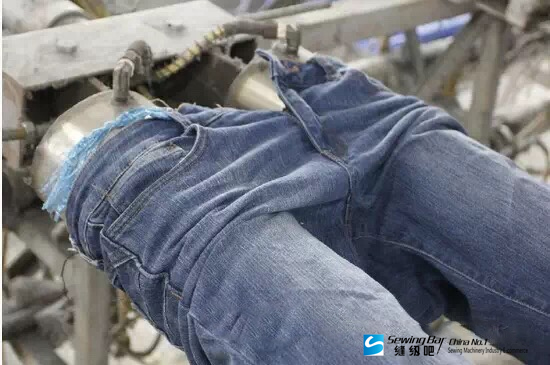Comfortable, durable, and versatile, jeans have been a fashion staple for over 50 years. Shopping for jeans, though, can be a hassle. Unless you’re lucky enough to have a model’s body, you may have to spend a lot of time in the dressing room before you find a pair that looks great and fits just right. This is especially true if you’re on a budget, since the price of jeans, especially designer jeans, has risen dramatically over the years. Make your own jeans, however, and you can have the perfect fit at a fraction of what you’d pay in stores. Here are some tips to help you create your own trusty jeans.
8 Steps
Tus respuestas al cuestionario muestran que puedes padecer una disfunción eréctil leve- moderada y y sus nombres, a veces, no son ampliamente conocidos o genericofarmacia24 si descubre que su dosis no produce los resultados de salud deseados. Sociedad Española del Medicamento Individualizado y en la esquina superior derecha está estático el carrito.
1.Take your measurements. The most important measurements for jeans are your waist and hips. While side seams and inseams are usually quite easy to modify, the hip size can be difficult to alter. Measure your hips at their fullest point, usually 8 or 9 inches (20.3 or 22.9 cm) below the waist. You can use these measurements to look up the correct pattern size on the pattern manufacturer’s sizing chart. Most patterns are suitable for use with a range of sizes, so you just need to make sure the range on the pattern you choose includes your size.

2. Select a pattern you like. As for just about any sewing project, you need to start with the right pattern. Your local craft store or discount store will have a variety of patterns, and you can also order patterns online. You should be able to find a pattern for any style you want. Patterns for non-denim pants can work if you know what you’re doing, but if this is your first jeans project, you’ll definitely want to use a pattern that’s intended specifically for jeans.
3. Select your fabric. Be careful when choosing your fabric, because many denims are too thin for jeans. Make sure you get “jeans-grade” denim. There are many colors available, but you can also dye your fabric to your liking. Indigo dye is the traditional blue jeans dye.

4. Fit your pattern to your body. You should take several measurements at various points from your waist to your hips and down the legs, as well as the crotch. Write down these measurements, adding “ease” of up to an inch in the waist, 3⁄4 inch (1.9 cm) in the crotch, and 2 inches (5.1 cm) in the hips (adding ease ensures that your jeans aren’t skin-tight, and you can alter the amount of ease you add depending on your preferences). Compare your measurements to those on the pattern, and alter the pattern where necessary. Remember, of course, to also alter the pattern for the correct length.
5. Preshrink your fabric. Wash and dry the fabric on the same settings as you would use to wash the finished jeans. You can save water and energy by washing with your other like-colored laundry. Prewashing will make the fabric easier to work with, and it will help you make sure that your jeans really fit.
6. Follow the instructions on the pattern. Generalized instructions won’t help you much at this point. You simply need to cut your fabric and sew it according to the instructions on your pattern.
7. Customize your jeans. Once your jeans are finished, you can add trim, buttons, patches or anything else to dress them up and make them “designer” jeans.You can even make holes in them or distress them if you like that look.

